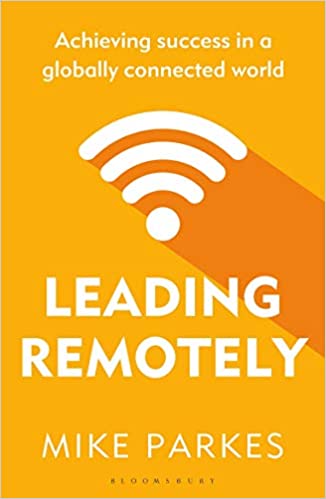Leading Remotely
Achieving success in a globally connected world


Mike Parkes led the Development Associates Group, a subsidiary of Deloitte, the global consultancy, before co-founding his own consulting practice Momentum Development Ltd in 2001. Today, he leads Momentum Results LLP and is lead facilitator for the British Retail Consortium’s ‘Retail Masters’ program at the University of Oxford’s Saïd Business School. His first book ‘Business Facilitation‘ was published in 2014. In 2020 he spoke at over 100 virtual leadership events on ‘Leading Remotely’ and ‘Managing Performance in a Virtual World’.
Eighteen months ago, there may have been a question about why we need a book on leading remotely. While globalisation and dispersed teams are nothing new, they were a subset of how the majority of people worked – today, as the COVID-19 pandemic rolls into its 15th month, great swathes of the working world has come to understand and live with remote working – and it has certainly brought a broad array of new challenges. What COVID-19 has also done is highlight many existing leadership challenges that were frequently being overlooked and the author uses the current virtual world to lever many of these issues back onto our agenda.
This book tackles questions that any remote leaders will face – in fact many of these questions are the same as any leader needs to answer – Parkes poses seven questions in the opening chapter, that are worthwhile for all leaders to think over, the brackets below are ours:
At the heart of this book is Parkes’s distinction between ‘single-site’ leaders and ‘multi-site’ leaders. If we are to track a leader’s career progression at some point fairly early on in their leadership journey they will move from managing and leading a team that is close to them, to one which is more dispersed, at this point everything changes. Their presence and ability to guide, inform, decide, cajole, instruct – whatever is their modus operandi – becomes disconnected from real time and becomes more latent and diluted. It is only when this happens that their ability to communicate objectives clearly and provide permission and space for others to take decisions becomes evident. As Parkes notes ‘remote leaders succeed through the decisions they don’t take themsleves’.
Single-site leaders often succeed because they can resolve issues, see opportunities and ensure teamwork – that is, they are doing the bulk of the work themselves. This approach runs into the sand quickly once they are removed from the action on a day-to-day basis.
Parkes and his colleagues have identified eight dimensions that leaders can be assessed on that will indicate their likely performance as a sucessful remote leader. He notes that no-one they have assessed has had a ‘High’ assessment in every category – but it does allow people to identify where they are strong and which areas need attention.
This book is part guide – exploring more deeply the brief outline given above – and more colourfully, part war-stories. Parkes draws on his extensive consulting experience to illuminate the issues above with the experiences and successes and failures of those organisations he has been privy to. From UK-based retail companies to Hong-Kong tech ones, Parkes provides 10 insights from successful leaders.
As ever it is these tales from the front-line of experience that pack more of a punch. The theory of what is needed to be an outstanding remote leader in practice is easily understood, but it is the nuances of how this can be done that leave the emotional impact that may resonate later when you catch yourself diverging from the theory, and can get you back on track. “Too many leaders obsess with numbers” says the CCO of Bakuun, the HK travel tech firm, “they are important but the team knows them. It is more about how you help them succeed” or “Have an explicitly stated purpose for each of your chat groups and communication channels” from the US Country Manager for Tony Chocolonely. These micro-tips are very implementable and provided here in plenty in the short case studies.
The pandemic broke as Parkes was finishing the manuscript, or so he thought, but this book inevitably needed further reflection from the experiences of the mass remote working that has been thrust upon business in the last year. So a final additional chapter with observations on how they handled the ‘working from home’ era is included, with interviews from a further roster of senior executives, mostly UK-based. Again these ‘tales of the pandemic’ are rich and impactful – they are some early collected research on how corporations dealt with the leadership challenges of this most VUCA of times.
Title: Leading Remotely
Author/s Name/s: Mike Parkes
Publisher: Bloomsbury Business
ISBN: 978-1-4729-9119-5
Publishing Date: June, 2021
Number of Pages: 190
Author Knowledge Rating: 1-5 (based on their years of experience, academic expertise in subject areas, and exposure to cross-functional thinking in the area)

















































































Readability: 1-5 score(1=dense and v academic; 5=frantic; page turner)


















































































Appropriate Length: (1=could have been written in 25% of the length;5=could have been longer)




































































































Core Idea Value: (1=nonsense (or entirely esoteric); 5=game-changer)



































































































